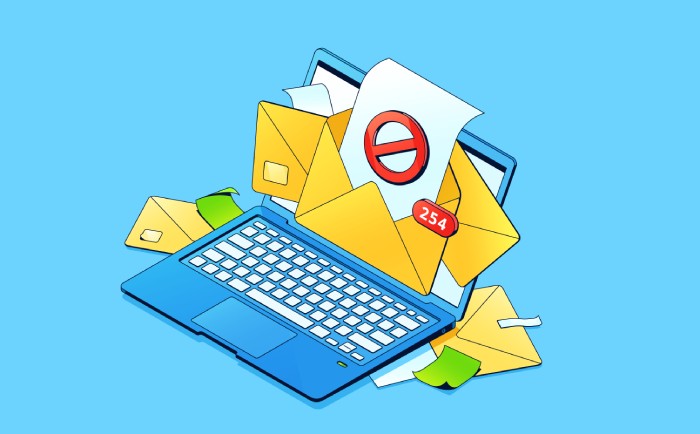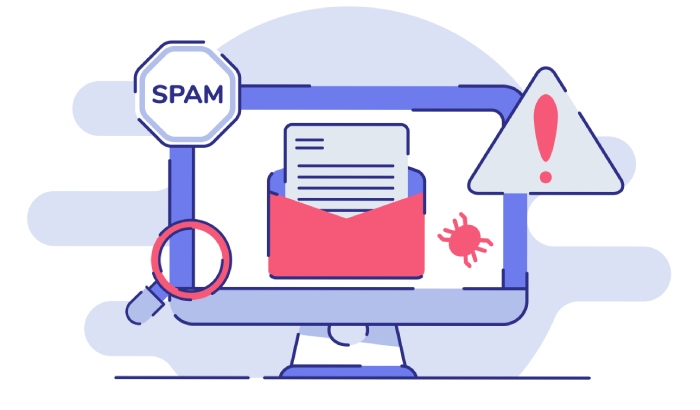As a hosting provider, your IP reputation is of paramount importance. This is one of the factors that determines whether your customers’ emails arrive at their inbox or junk folders.
Unfortunately, traditional SMTP providers collect reputation data at the server level. This puts shared hosting and VPS providers in a tight spot.
If you host hundreds of customers on a single server, one bad actor sending spam emails can ruin the reputation of every single other user. This significantly damages the user experience for all your legitimate customers and generates a ton of support tickets, thereby straining your resources considerably.
So what can you do?
Since you can’t check every single email that passes through your systems, trying to stop spammers from exploiting your servers is not a practical solution. Instead, you can implement an outbound SMTP service that identifies bad actors at the user level, so that you can control reputation damage while keeping your legitimate users happy with your service.
Our outbound SMTP service achieves this by doing two very important things:
First, we analyze trends to identify where the spam originated. Second, we identify the origin accounts so that our clients can exclusively take action on bad users. Read on to learn how this helps you fight spam accounts and earn a stellar reputation.
Outbound SMTP Services Spot Spam-Like Trends
Since you can’t physically prevent spammers from misusing your resources and manually verify every single email that originates from your servers, there is only one way to identify spam. You must analyze large data patterns to find out where the spam originates.
Of course, this is easier said than done. If your IT resources are dedicated to the web hosting business, it is unlikely that you have substantial resources for spam filtering. Even if this isn’t the case, applying resources is complicated without a clear, established guideline generated from years of experience.
This experience is what puts DuoCircle at the forefront of outbound SMTP services. Additionally, cutting-edge advances in machine learning and compromised account detection provide the tools that we use to help our ISP clients identify red flags indicating server misuse.
These tools allow us to automatically check the content of each email originating from a customer’s server and to develop a digital fingerprint for that content. We then compare the digital fingerprint with an up-to-the-minute database of spam signatures already in the wild. If there is a sudden uptick in illicit activity, we can automatically trigger rate limiting or block the sender entirely.
We also use tools to track individual users’ message volume, recipient validation failures, and other signals of spam email content. Without the right tools and a healthy dataset, identifying spam email accounts is extraordinarily difficult. But, our approach makes it simple.
All of these approaches rely on catching spam email users after they begin hurting your reputation.
The truly innovative bit is this: we analyze responses from email recipients and generate data from whether they interact with the email your users send. By using this feedback data, we can identify spammers proactively and prevent them from hurting your reputation before the other signals are triggered.
Outbound SMTP services identify bad users
By leveraging data and smart algorithms for server traffic analysis, we can generate a compelling “big picture” look at the IP reputation for your server. But how do you use that data to inform concrete actions that prevent IP reputation problems?
The key to our solution is identifying spam email accounts and then empowering our clients to immediately take action. For most ISPs, there are two ways to go about this:
- We generate a human-readable email that shows our clients the traffic that we think is suspicious and why we think it’s suspicious, or;
- We deploy an API webhook so that our clients can issue broad, sweeping changes to multiple compromised accounts in seconds.
It should be evident that the first option is ideal for situations where the compromised user base is small. If we are working with a larger ISP and the number of bad users sending spam email is high, then implementing the webhook method is much more efficient.
More importantly, we can shut down traffic from compromised accounts while generating these messages. This way, even if a client does not respond immediately, the account in question is blocked from sending out spam messages; it is always better to be safe than sorry.
Without a mechanism for taking action against individual users, traditional SMTP providers assign a poor reputation score to your entire server. Our solution lets you ensure that your legitimate customers keep the high reputation they deserve and their emails reach their intended destinations.
Why is spam mail still a problem?
Our outbound SMTP services solve a problem that is as old as email itself. For many users, IT administrators, and web hosting providers, the bigger question remains unanswered; how can spam accounts still exist when we are almost a quarter into the 21st century?
The truth is that services like ours are helping to bridge the gap and get rid of spam for good. But for as long as there are financial gains to be made through spam, this problem will continue. Recently, spam has taken a turn towards cybercriminal activity, what with the advent of new forms of phishing and ransomware.
It is now more important than ever for ISPs to assume control of server traffic, identify bad actors, and quarantine accounts that ruin the Internet experience for the rest of us. As the Internet develops and users come to expect more from their hosting providers, fundamentals like IP reputation will become even more important than it is now.
An increasing number of new users will place priority on ISPs that deliver premium service, and those who fall victim to reputation-damaging spam account misuse will fall behind. Implement a secure and scalable solution for preventing IP reputation problems today so that you can keep your users happy well into the future.


